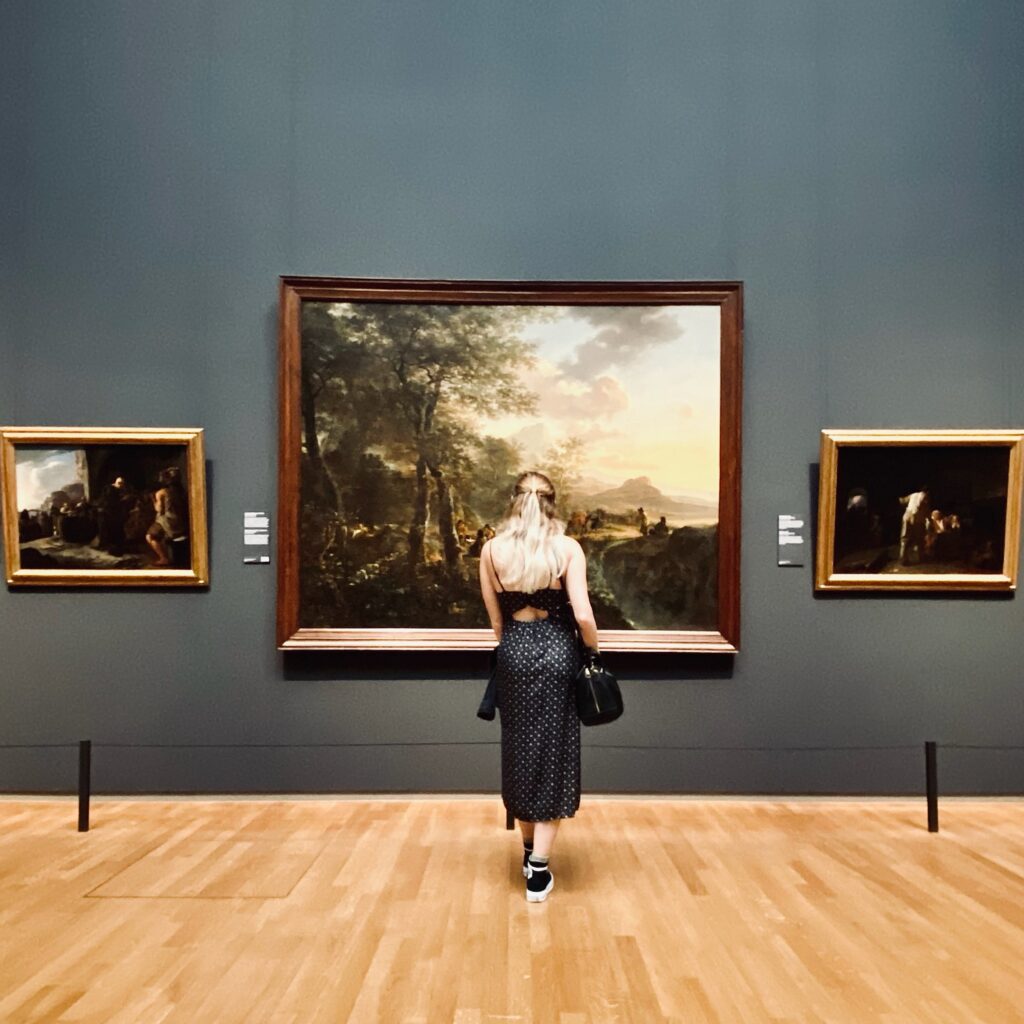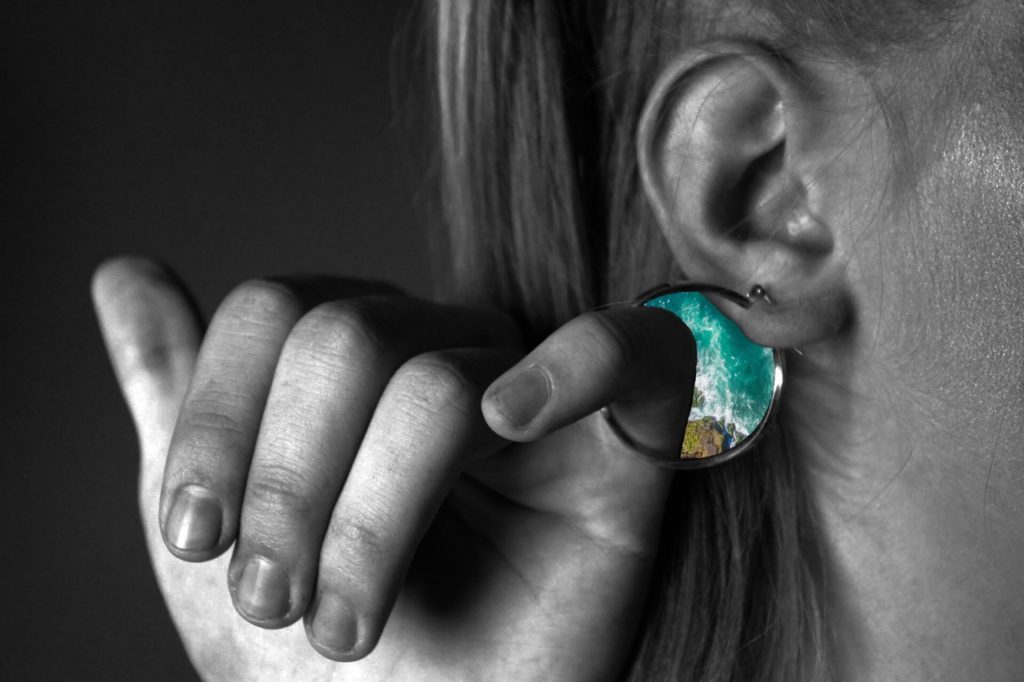Art can make you feel a wide range of emotions and thoughts, often making it difficult to describe its impact. Finding the right words to describe how art makes you feel can deepen your connection to both your own creations and those of others.
This article explores the significance of describing art, provides tips for writing museum evaluations, and offers advice on participating in critiques. By embracing these practices, you can enhance your appreciation and understanding of art, fostering a richer artistic dialogue.

The Importance of Describing Your Art
Learning how to describe your art is an essential aspect of the creative process. It allows you to communicate your vision, emotions, and ideas to your audience through written words, as well as the visual you created. When you describe your art, you bridge the gap between your inner world and the viewer’s experience. This connection can enhance the viewer’s appreciation and understanding of your work.
Moreover, the act of describing your art helps you to reflect on your creative choices and the hidden messages in your artwork. When you describe how art makes you feel you can reveal deeper insights. From details from your artistic journey to the influences that have shaped your style, creating an artist statement is often a necessary part of sharing your art. Art is inherently subjective in nature. But, this should not hinder your descriptions of it. While art can often feel difficult to articulate, finding the right words to describe how art makes you feel can enrich the overall artistic dialogue and meaning behind the piece.

If you are looking to describe your own personal art, I suggest taking a look at this article about How to Write an Artist Statement. I discuss how to format the statement, brainstorming questions, how famous artists describe their art, and a comprehensive list of principles and elements of design.
How to Write a Museum Artwork Evaluation
In contrast to writing an artist statement, writing a museum evaluation or a written critique involves specific steps. Please keep in mind that this format may differ from that you learn in art school or from other sources. So, if this is a formal school assignment, make sure to follow the rubric you will be graded on.
My art school required me to attend a museum each quarter (4 times a year) and write a museum artwork evaluation regarding one piece that stood out to me. As someone who has written 16-20 of these written critiques, I believe I am justified to provide advice on it.
Step 1: Visit a museum
Explore the art in your community and see how your environment embraces art and artistic expression. Do you see graffiti art decorating your streets? Does your community have multiple galleries or museums? The more you train yourself to notice art in your community, the more you will really see it.
Whether you visit a local gallery, or a large scale renowned museum, I think it is important to get to know the art chosen to hang in museums. You see the size, mediums, and styles of artists who came before you and it inspires you in the best ways.
Begin by observing the museum exhibit in its entirety, noting the layout, lighting, and overall atmosphere. Pay attention to how the artworks are displayed and any themes or narratives that are present. Typically, the artwork facing the front door is meant to grab your attention, so be aware of where the artwork sits around the gallery itself.
Step 2: Find artwork you want to write about
When you find a specific artwork, you will feel a certain connection to it. It may not be the biggest painting, or the most unique sculpture, but it will speak to you. This connection to the artwork is important when you describe how art makes you feel. If you don’t feel anything, it’s hard to write about anything.
Keep in mind that it’s okay to not feel connections to any of the artwork in the gallery. I found sometimes I connected to the impressionist style because it matched how I painted. Other times I connect with controversial art because it makes me really think about what can be classified as art. For example, AI art is becoming more popular because it sparks conversation.
Don’t know your art style? Check out this easy art quiz I made to help you better understand your art style.
Step 3: Collect the artwork details
Be sure to write down details about the artwork you choose. You may also want to take a photo of the art to reference later. Make sure you are allowed to take photos in the museum and don’t use flash!
The art details can include:
- Name of the museum
- Date of your visit
- Name of the artwork
- Artist(s) name
- Mediums used
- Size of the art
Step 4: Describe how art makes you feel
As mentioned above, your assignment rubric may differ, but I tend to follow the LAAs Five Step Approach when writing a museum critique. This approach is standard protocol for many art competitions and known for its fairness and consistency.
When writing your evaluation, consider the following:
- Description ~ Describe what you see in front of you. Think about colors, subjects, shapes, and lines.
- Analysis ~ Separate the parts out by visual elements, design principles, and compositional elements. A list is provided below.
- Interpretation ~ Describe how art makes you feel. Think about why you chose this piece and your connection to it.
- Judgment ~ Assess the artwork for how it benefits others, conveys an idea, or provides value.
- Review ~ Share your understanding and learning with others!

How to Participate in Critiques
Participating in in-person art critiques can be a valuable learning experience. It allows you to receive constructive feedback and view your artwork from different perspectives. It may feel daunting, but a critique is one of the best ways to quickly improve as an artist. Here are some tips on how to participate effectively:
- Be Open-Minded: Approach critiques with an open mind. Understand that feedback is not personal and meant to help you grow as an artist.
- Listen Actively: Pay close attention to the feedback given by others. Take notes if necessary, and try to understand the points being made.
- Ask Questions: If you receive feedback that is unclear, don’t hesitate to ask for clarification. This shows that you are engaged and willing to learn.
- Be Respectful: When giving feedback, be respectful and constructive. Focus on specific aspects of the work and offer suggestions for improvement.
- Reflect on Feedback: After the critique, take some time to reflect on the feedback you received. Consider how you can apply it to your future work.
Art critiques can be challenging, as discussing and evaluating art is inherently subjective. However, by participating in critiques, you gain valuable insights that can enhance your artistic practice. Remember, the goal is not to achieve perfection but to continually learn and improve.
100 Words to Describe How Art Makes you Feel
Below is a list of a hundred artsy keywords you can use when describing your art, others’ art, and in critiques. When you can connect to art, you can better describe how art makes you feel.
I also recommend getting these poetry magnets if you are a more tactile or visual learner. I keep these on my fridge so I am constantly integrated artsy words and adjectives into my everyday language. This practice helps me write artist statements easier.
- Inspired
- Moved
- Thoughtful
- Peaceful
- Energized
- Calm
- Curious
- Nostalgic
- Joyful
- Reflective
- Intrigued
- Awed
- Delighted
- Contemplative
- Uplifted
- Emotional
- Transcendent
- Connected
- Stirred
- Mesmerized
- Captivated
- Surprised
- Enlightened
- Liberated
- Amazed
- Grateful
- Soothed
- Motivated
- Empowered
- Touched
- Excited
- Introspective
- Comforted
- Evocative
- Gripped
- Tranquil
- Impressed
- Fascinated
- Challenged
- Vibrant
- Meditative
- Reverent
- Jubilant
- Serene
- Engaged
- Overwhelmed
- Enchanted
- Stimulated
- Invigorated
- Deliberative
- Absorbed
- Rejuvenated
- Mystified
- Fulfilled
- Perplexed
- Radiant
- Provoked
- Harmonious
- Content
- Bewildered
- Pensive
- Exhilarated
- Awe-struck
- Reflective
- Humbled
- Invoked
- Unified
- Pacified
- Elated
- Gripped
- Vitalized
- Contemplative
- Spellbound
- Introspective
- Engrossed
- Aesthetic
- Comforted
- Intrigued
- Elevated
- Resonant
- Provoked
- Entranced
- Comforted
- Jubilant
- Animated
- Dreamlike
- Stimulated
- Connected
- Empowered
- Energized
- Enchanted
- Uplifted
- Peaceful
- Reflective
- Fulfilled
- Curious
- Vibrant
- Mesmerized
- Awed
- Enlightened
Conclusion
Evaluating artwork in a professional way is sometimes difficult. Art is inherently subjective and the piece’s meaning is not necessarily obvious. By starting with your first impressions, looking closely at the techniques and materials, and thinking about the context and meaning, you get a full picture of the piece. Each step helps you understand the artist’s vision and the impact of their work. In the end, you appreciate the strengths and suggest areas for improvement, adding to the ongoing conversation about art.
When you describe how art makes you feel you deepen your understanding of art in general. This analysis behind why and how gives art value. It is truly a gift to be able to translate emotion and feeling using shapes, lines and colors. This process of evaluating art not only honors the artist but also deepens your own connection to the world of art.
Did you enjoy this article? Please comment your thoughts below and be sure to check out the tab Art Advice for more artsy articles! Thanks for your support.



Hey people!!!!!
Good mood and good luck to everyone!!!!!
Hey people!!!!!
Good mood and good luck to everyone!!!!!
TRULY GRATEFUL for you creating this post! Classy post!